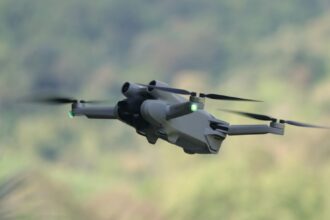Critical infrastructure refers to the essential systems and assets that are vital for the functioning of a society and its economy. These include utilities such as water, electricity, and gas, as well as transportation networks, communication systems, and healthcare facilities. The integrity and security of these infrastructures are paramount, as their disruption can lead to significant consequences, including economic loss, public safety risks, and even national security threats.
As societies become increasingly reliant on technology and interconnected systems, the need to protect these critical assets has never been more pressing. In recent years, the landscape of threats to critical infrastructure has evolved dramatically. Cyberattacks, natural disasters, and physical sabotage have all emerged as potential risks that can compromise the functionality of these essential services.
As a result, governments and organizations are seeking innovative solutions to enhance their protective measures. Among these solutions, the use of drones has gained considerable attention due to their versatility and effectiveness in monitoring and safeguarding critical infrastructure.
Key Takeaways
- Critical infrastructure is essential for the functioning of a society and includes sectors such as energy, transportation, and communication.
- Threats to critical infrastructure can come from natural disasters, cyber-attacks, and physical sabotage, among others.
- Drones play a crucial role in protecting critical infrastructure by providing surveillance, reconnaissance, and rapid response capabilities.
- Using drones for infrastructure protection offers advantages such as cost-effectiveness, flexibility, and the ability to access hard-to-reach areas.
- However, challenges and limitations of drone warfare in protecting critical infrastructure include regulatory restrictions, limited payload capacity, and vulnerability to hacking.
Understanding the Threat to Critical Infrastructure
The threats to critical infrastructure are multifaceted and can arise from various sources. Cyber threats have become particularly prominent, with hackers targeting systems that control everything from power grids to water treatment facilities. These cyberattacks can lead to data breaches, system failures, and even catastrophic incidents if not addressed promptly.
Additionally, physical threats such as terrorism or vandalism pose significant risks, as they can directly damage infrastructure and disrupt essential services. Natural disasters also represent a considerable threat to critical infrastructure. Events such as hurricanes, earthquakes, and floods can cause extensive damage to physical assets, leading to prolonged outages and recovery challenges.
The increasing frequency and intensity of these events due to climate change further exacerbate the vulnerability of critical infrastructure. Understanding these threats is crucial for developing effective strategies to protect these vital systems and ensure their resilience in the face of adversity.
The Role of Drones in Protecting Critical Infrastructure

Drones have emerged as a powerful tool in the arsenal of infrastructure protection strategies. Their ability to provide real-time surveillance and data collection makes them invaluable for monitoring critical assets. Equipped with advanced sensors and cameras, drones can conduct aerial inspections of infrastructure such as bridges, pipelines, and power lines, identifying potential vulnerabilities before they escalate into serious issues.
This proactive approach allows for timely maintenance and repairs, ultimately enhancing the reliability of essential services. Moreover, drones can be deployed in emergency situations to assess damage and coordinate response efforts. In the aftermath of a natural disaster or an attack on critical infrastructure, drones can quickly gather information about affected areas, providing first responders with crucial situational awareness.
This capability not only speeds up response times but also helps in resource allocation, ensuring that assistance reaches those who need it most.
Advantages of Using Drones for Infrastructure Protection
| Advantages of Using Drones for Infrastructure Protection |
|---|
| 1. Cost-effective surveillance |
| 2. Quick and efficient inspection of infrastructure |
| 3. Access to hard-to-reach areas |
| 4. Real-time data collection and analysis |
| 5. Improved safety for personnel |
| 6. Enhanced security measures |
The advantages of utilizing drones for infrastructure protection are numerous and compelling. One of the most significant benefits is their ability to cover large areas quickly and efficiently. Traditional inspection methods often require extensive manpower and time, whereas drones can traverse vast distances in a fraction of the time.
This efficiency translates into cost savings for organizations tasked with maintaining critical infrastructure. Additionally, drones can access hard-to-reach or hazardous locations that may pose risks to human inspectors. For instance, inspecting high-voltage power lines or remote pipelines can be dangerous for personnel.
Drones eliminate this risk by providing a safe alternative for conducting inspections without putting human lives in jeopardy. Furthermore, the data collected by drones can be analyzed using advanced software tools, allowing for more informed decision-making regarding maintenance and upgrades.
Challenges and Limitations of Drone Warfare in Protecting Critical Infrastructure
Despite their many advantages, the use of drones in protecting critical infrastructure is not without challenges and limitations. One significant concern is regulatory compliance. The operation of drones is subject to various laws and regulations that can vary by region or country.
Navigating these legal frameworks can be complex, potentially hindering the deployment of drone technology for infrastructure protection. Another challenge lies in the technological limitations of drones themselves. While advancements have been made in drone capabilities, issues such as battery life, payload capacity, and weather sensitivity can impact their effectiveness.
For instance, adverse weather conditions like heavy rain or strong winds can limit drone operations, making it difficult to rely solely on them for continuous monitoring. Addressing these challenges will be essential for maximizing the potential of drones in safeguarding critical infrastructure.
Legal and Ethical Considerations in Using Drones for Infrastructure Protection

The deployment of drones for infrastructure protection raises important legal and ethical considerations that must be carefully navigated. Privacy concerns are at the forefront of these discussions, as drones equipped with cameras can inadvertently capture images or data related to individuals or private property. Striking a balance between effective surveillance and respecting privacy rights is crucial to maintaining public trust in drone operations.
Additionally, there are ethical implications surrounding the use of drones in potentially militarized contexts. While drones can enhance security measures, their use must be guided by principles that prioritize human rights and minimize harm. Establishing clear guidelines for drone operations in infrastructure protection is essential to ensure that these technologies are used responsibly and ethically.
Examples of Successful Drone Operations in Protecting Critical Infrastructure
Several successful drone operations have demonstrated the effectiveness of this technology in protecting critical infrastructure across various sectors. For instance, utility companies have employed drones to inspect power lines and substations, significantly reducing inspection times while improving safety outcomes. These operations have led to early detection of potential issues such as vegetation encroachment or equipment wear, allowing for timely maintenance interventions.
In the realm of transportation, drones have been utilized to monitor roadways and bridges for structural integrity. By conducting regular aerial inspections, transportation agencies can identify wear and tear before it leads to catastrophic failures. These proactive measures not only enhance public safety but also extend the lifespan of critical assets.
Training and Skill Requirements for Drone Operators in Infrastructure Protection
The effective use of drones for infrastructure protection necessitates a skilled workforce capable of operating this technology safely and efficiently. Training programs for drone operators must encompass a range of competencies, including technical proficiency in piloting drones, understanding regulatory requirements, and interpreting data collected during inspections. Moreover, operators must be trained in safety protocols to mitigate risks associated with drone operations.
This includes knowledge of airspace regulations, emergency procedures, and maintenance practices for drone equipment. As the demand for drone operators continues to grow within the infrastructure protection sector, investing in comprehensive training programs will be essential for ensuring successful outcomes.
Future Developments in Drone Technology for Infrastructure Protection
The future of drone technology holds immense potential for enhancing infrastructure protection efforts. Innovations such as artificial intelligence (AI) integration are expected to revolutionize how drones operate in monitoring critical assets. AI algorithms can analyze data collected by drones in real-time, identifying anomalies or potential threats with greater accuracy than human operators alone.
Additionally, advancements in battery technology may lead to longer flight times and increased payload capacities for drones. This would enable operators to conduct more extensive inspections without needing frequent recharges or equipment changes. As research and development continue in this field, the capabilities of drones will likely expand further, making them an even more integral part of infrastructure protection strategies.
Collaborative Efforts in Using Drones for Infrastructure Protection
Collaboration among various stakeholders is crucial for maximizing the effectiveness of drones in protecting critical infrastructure. Public-private partnerships can facilitate knowledge sharing and resource allocation between government agencies and private companies specializing in drone technology. By working together, these entities can develop comprehensive strategies that leverage the strengths of both sectors.
Furthermore, collaboration with local communities is essential for fostering acceptance and understanding of drone operations. Engaging with residents about the benefits and safety measures associated with drone use can help alleviate concerns related to privacy or noise pollution. Building trust within communities will be vital for ensuring successful implementation of drone initiatives aimed at safeguarding critical infrastructure.
The Importance of Drone Warfare in Safeguarding Critical Infrastructure
In conclusion, the role of drones in protecting critical infrastructure is becoming increasingly vital as societies face evolving threats from various sources. Their ability to provide real-time surveillance, conduct inspections efficiently, and enhance emergency response efforts positions them as a key asset in safeguarding essential services. While challenges remain regarding regulatory compliance, technological limitations, and ethical considerations, ongoing advancements in drone technology hold promise for overcoming these obstacles.
By investing in training programs for operators and fostering community engagement, societies can harness the full potential of drones while ensuring responsible use. Ultimately, embracing drone warfare as a tool for safeguarding critical infrastructure will contribute significantly to enhancing public safety and resilience in an increasingly complex world.
Drone warfare has increasingly become a significant concern for the security of critical infrastructure worldwide. As drones become more accessible and advanced, the potential for their use in targeting essential facilities such as power plants, water supply systems, and communication networks grows. This evolving threat necessitates a reevaluation of current security measures and the development of new strategies to protect these vital assets.



